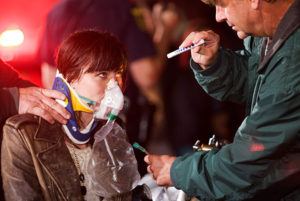Even though the NSW road toll has dropped from more than 1200 each year in the 1970s to less than 500 (based on the 2008 road toll and the preliminary figures for 2009), speeding remains an ongoing problem.
In the 1970s and early 1980s, drink driving was Australia’s biggest road safety challenge. However since random breath testing was introduced in 1982 there has been a change in community opinion – drink driving is not acceptable. If we can all adopt this attitude to speeding as well our roads will be a much safer place.
With the decrease in drink driving, speed has become the biggest road safety challenge for NSW.
The size of the problem
In NSW speeding is a factor in about 40 per cent of road deaths. This means on average around 177 people die each year in speed-related crashes in NSW.
Speeding was a factor in the deaths of 857 people over five years 2006-2010. In addition to those killed, more than 4100 people are injured in speed-related crashes every year.
Did you know each year around 700,000 speeding offences are recorded in NSW?
Risky business
It’s not that hard to work out that speeding increases the risk of a crash and the severity of the crash outcome.
The risk of causing death or injury in an urban 60km/h speed zone increases rapidly even with relatively small increases in speed. If you are driving are 65km/h in a 60km/h speed zone you are doubling your chances of having a crash. At 70km/h, your risk of having a crash is more than four times the risk at 60km/h.
| SPEED – KM/H | RISK RELATIVE TO 60KM/H |
|---|---|
| 65 | Double |
| 70 | 4 times |
| 75 | 11 times |
| 80 | 32 times |
The risk of a crash when driving at 68km/h in a 60km/h zone is the same as driving with a blood alcohol level of 0.08. The risk of a crash when driving at 72km/h in a 60km/h zone is the same as driving with a blood alcohol level of 0.12.
A key issue in speeding-related crashes is that most motorists underestimate the distance needed to stop. A car travelling at 60km/h in dry conditions takes about 38 metres to stop. A car travelling at 80km/h needs an extra 20 metres.
The message is simple ‘Don’t Rush’
In order to help raise awareness of the issue surrounding speeding Roads and Maritime Services launched the road safety speeding campaign ‘Don’t Rush’. The campaign focuses around the need to reinforce the crash consequences of speeding, and to contribute to an overall reduction in the road toll. It is important that communities are conscious of the emotional and physical impact on others road trauma has. Therefore the ‘Don’t Rush’ campaign also focuses on encouraging community caution amongst peers in speaking out against other in their peer group who don’t stick to the road rules.
Males in particular are the campaigns primary focus, as they are over represented in speed-related crashes in NSW.
You can see the ‘Don’t Rush’ messages from Professor Owler and Testimonials spoken by real life crash survivors and their families on the Centre for Road Safety website.

